News
GE's Lucalox Horticultrual Lamps Revolutionize Greenhouse Lighting
 With the green revolution taking place in lighting, people are looking for long lasting, more efficient lighting options in all applications. One area where a big push for greener lighting has occurred is in horticultural lighting. GE’s line of Lucalox XOPSL and XO HID horticultural lamps are an excellent and long lasting option for greenhouse lighting. The Lucalox lamps are extremely long lasting, depending on their wattage they can last anywhere between 16,000hrs and 28,5000hrs. GE’s Lucalox lamps are also powerful, producing between 53,675 mean lumens and 106,400 depending on which wattage lamp you choose. The Lucalox series lamps’ long lasting performance and high light output make them equivalent to about five 125w fluorescent lamps or 42 40w four-foot fluorescent lamps, making these HID horticultural lamps a great option for retrofitting your greenhouse with more effective lighting. These lamps emit a light 2,100K reddish light that is ideal for triggering the hormones in plants that make them flower.
With the green revolution taking place in lighting, people are looking for long lasting, more efficient lighting options in all applications. One area where a big push for greener lighting has occurred is in horticultural lighting. GE’s line of Lucalox XOPSL and XO HID horticultural lamps are an excellent and long lasting option for greenhouse lighting. The Lucalox lamps are extremely long lasting, depending on their wattage they can last anywhere between 16,000hrs and 28,5000hrs. GE’s Lucalox lamps are also powerful, producing between 53,675 mean lumens and 106,400 depending on which wattage lamp you choose. The Lucalox series lamps’ long lasting performance and high light output make them equivalent to about five 125w fluorescent lamps or 42 40w four-foot fluorescent lamps, making these HID horticultural lamps a great option for retrofitting your greenhouse with more effective lighting. These lamps emit a light 2,100K reddish light that is ideal for triggering the hormones in plants that make them flower.GE’s Lucalux horticultural lamps can last an extremely long time, but you must take certain measures to ensure that they operate correctly and otimally. First, try to turn your Lucalox lamps on and off as little as possible; turning it off and then putting it through its re-ignition process will shorten the lamp’s lamp life. Second, make sure that the environment is vibration free, vibration can harm the lamp’s fragile components. Third, and this is true will all lamps requiring ballasts, make sure that the ballast you are using is compatible with Lucalox lamps.
GE’s Lucalox 400w, 600w, and 750w lamps are the new standard in horticultural lighting and have been lauded for their long lasting light and luminous efficacy. BulbAmerica stocks the full Lucalox line as well as other GE lighting products, so be sure to check them out. As usual, leave a question or comment on our blog or Facebook, or call us at 1-877-622-0897 with any further inquiries.
In the Spot Light #4: Low Pressure Versus High Pressure Sodium Lamps
 In the next installment of my ‘In the Spotlight Series’, I will look at low pressure and high pressure sodium bulbs and how they differ. These two lamps have been a source of confusion for some our customers, so let’s get started clearing the air regarding these two lamps. Low pressure sodium (LPS) and high pressure sodium (HPS) bulbs belong to the HID lamp family, which means that they produce light by exciting gasses and vaporized metals with electrical current to sufficiently excite them and produce light. The composition of LPS and HPS lamps is somewhat similar, they both contain a noble gas and solid sodium. HPS lamps may contain additional metals and have a slightly different construction than LPS lamps, but the specifics of these differences are not necessary for the purposes of this article. What really sets LPS and HPS lamps apart is the qualities of their light and the size of their lamps. LPS lamps are known for their very yellow or orange light, these lamps are most commonly used in certain commercial and residential outdoor applications and street lighting. LPS bulbs are widely used because they are very efficient and have a very high luminous efficacy of around 200w/lm. One of the reasons for LPS bulbs’ efficiency is that nearly all of the light produced is easily visible by the human eye, close to zero ultraviolet or infrared light is produced. LPS lamps can be very large, reaching beyond 3.5ft in length. It is for this reason that sometimes streetlights or highway light fixtures are very large.
In the next installment of my ‘In the Spotlight Series’, I will look at low pressure and high pressure sodium bulbs and how they differ. These two lamps have been a source of confusion for some our customers, so let’s get started clearing the air regarding these two lamps. Low pressure sodium (LPS) and high pressure sodium (HPS) bulbs belong to the HID lamp family, which means that they produce light by exciting gasses and vaporized metals with electrical current to sufficiently excite them and produce light. The composition of LPS and HPS lamps is somewhat similar, they both contain a noble gas and solid sodium. HPS lamps may contain additional metals and have a slightly different construction than LPS lamps, but the specifics of these differences are not necessary for the purposes of this article. What really sets LPS and HPS lamps apart is the qualities of their light and the size of their lamps. LPS lamps are known for their very yellow or orange light, these lamps are most commonly used in certain commercial and residential outdoor applications and street lighting. LPS bulbs are widely used because they are very efficient and have a very high luminous efficacy of around 200w/lm. One of the reasons for LPS bulbs’ efficiency is that nearly all of the light produced is easily visible by the human eye, close to zero ultraviolet or infrared light is produced. LPS lamps can be very large, reaching beyond 3.5ft in length. It is for this reason that sometimes streetlights or highway light fixtures are very large.HPS lamps are used most often in outdoor applications such as street lamps, parking lots, and flood lighting and horticultural applications, where color rendering is not a priority. HPS lamps are efficient as far as HID lamps go, but do not have the quite the luminous efficacy of LPS lamps. Though HPS lamps are not as efficient as LPS lamps, they have excellent light spans with life hour ratings of 16,000 – 24,000 hours and are also typically smaller in size. The higher atmospheric pressure of the HPS lamps allows its contents to be assembled in a smaller lamp, and thus allowing the lamp to be installed in smaller fixtures, making it easier and less cumbersome to install and use. HPS lamps’ color temperatures are typically a yellowish-white light.
BulbAmerica has a great selection of both LPS and HPS bulbs to satisfy your lighting needs. Check out what we have to offer. As always, do not hesitate to leave a comment or question on the blog or give us a call at 1-877-622-0897.
In the Spotlight #2: Metal Halide HID Lamps
Out of all the HID lamps, metal halide lamps probably come in the most shapes and with the most bases. Metal halide lamps come in the familiar PAR shapes and their various sizes and in less familiar shapes like the T4.5s, the ED28, the BD17, and many others. Metal halide lamps are offered in even more base types than they are shape types. From the ubiquitous medium screw E26 and E27 and their bigger brother the mogul screwbase, to the less common RX7S RSC and others, metal lamps come ready to fix into a multitude of fixtures. This fact hints at the numerous applications of the metal halide lamp and suggests how popular a lighting technology the metal halide really is. Equally suggestive of their diversity of application is the fact that metal halide lamps are available in wattages anywhere between 20w and 24,000w.
There you have it: the metal halide HID. If after reading this you realize that the metal halide lamp is right for your needs, check out our comprehensive metal halide lamp offerings. If you are still on the fence, leave a comment or call us at 1-877-622-0897 for further consultation. We are here to help!
The MSD250: The Best Lamp for Entertainment Lighting
 The MSD250 is one of the most widely trusted lamps in theatre, studio, concert, and projection lighting. The MSD250 is a single ended metal halide high intensity discharge (HID) lamp with a GY9.5 two-pin prefocus base. The lamp’s 5mm arc produces a powerful 180,000 lumens and has an impressive life hour rating of 3,000 hours. The MSD250 has proven a popular choice by manufacturers of intelligent lighting fixtures, or automated moving heads, including American DJ, Elation Professional, and others.
The MSD250 is one of the most widely trusted lamps in theatre, studio, concert, and projection lighting. The MSD250 is a single ended metal halide high intensity discharge (HID) lamp with a GY9.5 two-pin prefocus base. The lamp’s 5mm arc produces a powerful 180,000 lumens and has an impressive life hour rating of 3,000 hours. The MSD250 has proven a popular choice by manufacturers of intelligent lighting fixtures, or automated moving heads, including American DJ, Elation Professional, and others. Though the Philips’ MSD Broadway series is the most widely recognized line of lamp products like it. Manufacturers including Osram (HSD series) and Platinum, and Silver offer alternative lamps to the Philips MSD250 Broadway that are similar in performance and light characteristics to the MSD250. Platinum and ilver’s MSD250 replacement bulbs have near identical performance to the Philips MSD, but are priced far more reasonably, making them affordable to more venues. Platinum’s MSD replacement is listed at $99.99 and Silver’s is listed at $77.50, compared to Philips MSD250’s price $124.02. We have the entire MSD Broadway lamp line as well as a comprehensive inventory of MSD replacement bulbs. Check it out!
Xenon Bulbs: A Powerful Lighting Option
With a patient’s life on the line, a surgeon needs a light source he or she can count on. Xenon bulbs are a popular choice among doctors, surgeons, and others in the scientific field due to their excellent color rendering and brightness. The HID xenon light bulbs come in a wide range of wattages (51W-500W) and an equally wide range of lumen output (1,000lm to 13,000lm). Xenon high intensity discharge bulbs work like all other HID bulbs, by sending electrical current through the gas filled enveloped and thus forming an arc of light. In a xenon bulb, the glass envelope is filled with xenon gas. Though xenon bulbs are not the most efficient, they are one of the few bulbs capable of high lumen output while maintaining cool color temperature. Due to their small arc, xenon bulbs offer superior beam control. Using xenon bulbs you can focus the Xenon bulb effectively, making it ideal for microscope use and surgical lighting. Ushio’s VAC line of HID ceramic xenon lamps is particularly exciting. The VAC lamps’ rated life of 1,200 hours coupled with its 6,000lm output make it powerful and a step forward in xenon lighting technology. In addition to surgical and medical applications, ceramic xenon lights can be used in video/data projection and fiber-optic illumination. Xenon light bulbs were, in fact, were first used for film projection and are today still the most popular choice for projector lighting in theaters and movie houses.The applications of xenon lighting continue to expand. Xenon bulbs are quickly becoming the bulb of choice for automobile headlights and home/office task lighting. Xenon lighting technology is still in its developmental phase but promises to be an even more powerful lighting option in the future.
HID Bulbs: More Than Just a Bright Idea
Metal halide bulbs are particularly popular. With a lifespan of 15,000-20,000+ hours, (nearly 20X the lifespan of an incandescent bulb) and 65-115 lumens per watt the metal halide bulb is among the most efficient. What makes metal halide bulbs the most versatile of the HID bulbs is their 65-90 color rendering index (CRI) score, bringing the metal halide close to the 100 CRI rating of sunlight and close to ‘true’ color. High pressure sodium bulbs, for example, have a CRI score of 20-25, casting whatever the bulb illuminates in a yellow glow. This severely limits the applications of high pressure sodium bulbs. Because metal halides are close to a CRI of 100, they can be used in areas where accurate color is important like inside a kitchen or supermarket. For a bulb that can fill a large place with lots of light efficiently, the HID bulb is a great choice. The luminosity and true color also make the metal halide bulb a popular choice in film and photography where light and color must be rendered accurately. The different types of HID bulbs and the types of fixtures to which they are configured make it a versatile and economic option.
HIDs are versatile and efficient: use them in your kitchen, parking lot, movie set, or greenhouse and you will find that your lighting and energy needs are met.
Dress Your Home or Office Up With Halogen Candelabra and Globe Light Bulbs
Candelabra bulbs generally refer to a family of shapes including B10, B13, C7, C9, crystallite, flame and more.Candelabras are offered in numerous bulb types including CFLs, LEDs, halogens, and incandescent. As you may or may not know, candelabra bulbs are used in numerous applications from wall sconces, to chandeliers, to electric candelabras, and other applications. Incandescent and halogen candelabras produce similar types of light, though halogens typically last a bit longer. Incandescent and halogen candelabras are still the standard for chandeliers and sconces where an unconventional bulb-shape can be disruptive. Though this may be true, CFL and LED candelabrasfeature outstanding energy savings and produce close to no perceptible heat. Furthermore, Osram’s LED candelabrasfeature color changing which can really liven up any room.
Hopefully this guide to halogen decorative light bulbs has been informative and you now feel confident in choosing the right one for you. In addition to a wide selection of halogen candelabras and globes to choose from, BulbAmerica also has an extensive catalog of LEDs, stage lighting, CFL, medical lighting, MR16s, and automotive lighting products to choose from, so be sure to check them out. As usual, leave us a comment or question on our Facebook or blog, or give us a call at 1-877-622-0897.
HPL Lamps: A BrightLighting Option for TV and Film Production
Among the most common HPL bulb is the HPL 575w lamp, or the HPL575. The HPL 575 has a lumen output range of roughly 12,000lm to 17,000lm, giving it a solid luminous efficacy rating. An important consideration in using, or deciding to use a long life HPL versus a regular HPL is that long life HPLs have a reduced color temperature compared to regular HPLs. Long life HPLs typically have a color temperature of 3,050˚K versus the high 3,250˚K color temperature of regular HPLs. One limitation of halogen bulbs is their inefficiency through their production of large amounts of heat. High amounts of heat also place stress on the bulb and likely contribute to bulb failure. HPLs feature a metal or ceramic heat sink base which reduces much of the heat produced by the bulb.
HPL 575 lamps are one of the go-to bulbs in film and TV production today. They are most often found inside ETC Source Four ellipsoidal fixture, as they were engineered to work them specifically. Regardless of this fact, HPLs continue to be extremely popular and produce a tremendous amount of light while maintaining excellent color rendering. If you are currently looking for a bulb for your film and production needs, look no further than HPLs.
Halogen Bulbs: Burning Bright and White for All Your Needs
 Halogen bulbs have long been popular in the home, for outdoor flood lights, automobile headlights, airfields, and many other applications. They are used as alternatives to normal incandescent because they are longer lasting and burn brighter. In a normal incandescent bulb, the filament heats up and produces light as a byproduct of the heating process. As the filament heats up, however, it degrades as its atoms are released into the glass envelope. Halogen bulbs solve this problem. When halogen gas is placed inside the glass envelope, it replenishes the degraded filament. This occurs due to a special property of the halogen gasses. As the halogen gas heats up, it replenishes the filament by depositing the filament’s lost atoms on its surface, thus making the filament’s and the bulb’s life longer lasting through what is called a halogen cycle.
Halogen bulbs have long been popular in the home, for outdoor flood lights, automobile headlights, airfields, and many other applications. They are used as alternatives to normal incandescent because they are longer lasting and burn brighter. In a normal incandescent bulb, the filament heats up and produces light as a byproduct of the heating process. As the filament heats up, however, it degrades as its atoms are released into the glass envelope. Halogen bulbs solve this problem. When halogen gas is placed inside the glass envelope, it replenishes the degraded filament. This occurs due to a special property of the halogen gasses. As the halogen gas heats up, it replenishes the filament by depositing the filament’s lost atoms on its surface, thus making the filament’s and the bulb’s life longer lasting through what is called a halogen cycle.Halogen bulbs are available in a vast range of wattages, from about 5w to 20,000w. Halogens have a correspondingly wide range of lumen output. Halogens come in nearly every socket type available, making them useful in nearly all types of fixtures. The versatility of halogen bulbs is matched by their excellent light quality. Typically, halogen bulbs have a CRI score of 100, meaning their color quality is near identical to that of natural sunlight. Generalizing about halogens is difficult because there are so many different types, brands, wattages, etc. The most common types of halogens out there include the A-line, the halogen PAR, and the bi-pin multifaceted reflector (MR) halogen. A-line halogens look like regular incandescent bulbs and can screw into any socket that an incandescent bulb can. The exterior envelope of the A-line is not actually the bulb; the halogen bulb is actually inside it to ensure protection full the bulb and a cooler bulb exterior. The halogen PAR is a standard PAR can bulb with a tungsten filament, but has its atmosphere filled with a halogen gas. The MR halogen is a small bulb with a concentrated beam perfect for down lighting and track lighting.
Although halogens are more efficient than normal incandescent bulbs, they are not nearly as efficient as CFLs or LEDs. Halogens waste a lot of energy generating heat, and thus get extremely hot and can pose a burn and fire risk.Halogens should always be used with caution and not placed in an area in which a child may touch them or where they could pose a risk of fire. Despite these risks, halogens are safe and effective lights provided they are used carefully. Halogens should be considered if you need bright, white light. We have tons of halogens, check them out today!
Recent Posts
- ETC Raises the Bar with their PARs24 November, 2014
- Photographers Choose CFLs for their Studio Lighting24 November, 2014
- Let There Be Light!: A PAR Can Guide for Your House of Worship By BulbAmerica Editor24 November, 2014
- Get the Most Out of Your Lighting Fixtures with Optima's Floor Stand24 November, 2014
- Followspots: Make Your Performance Stand Out Today24 November, 2014
- PAR Cans, Fresnels, and Ellipsoidals, Oh My!: A Guide to Stage Lighting Fixtures24 November, 2014
- An Introduction to Dimmer Packs24 November, 2014
- A Lighting Guide for Your Church on the Go24 November, 2014
- Elation's ELAR TRI EX Flood LED: An Innovative Outdoor Lighting Solution24 November, 2014
- Elation's ELAR EXFLOOD: A Powerful LED Wash24 November, 2014
Categories
- 20% off
- 2013
- 2014
- 4th of july
- 9/11
- abu dhabi
- accidents
- advertisement
- advice
- affordable
- amazing
- antique
- aoutdoor
- architecture
- arquitectura
- art
- automatics
- automobile
- automotive
- autumn
- back
- bat
- bathroom desig
- bed
- bedroom
- Beyonce
- big game
- big sale
- bjarke
- black
- black friday
- blue
- bodas
- break
- breast cancer
- bridge
- bubble machine
- building
- Bulb
- BulbAmerica
- Bulbs
- business
- buy
- cabinet
- cable
- can
- cancer
- candelabra
- Carnival
- cars
- casa
- cathedral
- cfl
- CFL Globe and Candelabra
- chandelier
- chandeliers
- cheap
- chiang mai
- china
- Christmas
- christmas trees
- Chrysler Building
- cloud
- Cold Cathode
- college
- color
- color changer
- color temperature
- colorado
- colors
- columbus
- columbus day
- compact
- compact fluorescent
- concert
- concerts
- connect
- Contemporary
- cool
- Copenhagen
- Cost
- crash
- creative
- cyber
- cyber monday
- dallas
- dame
- day
- de- stress
- deals
- deaths
- decor
- decoration
- decorations
- Denmark
- Design
- dimmable
- dimmer
- dimmers
- dining
- discount
- disorder
- diy
- dmx
- dome
- dress
- driving
- dubai
- earlier times
- earth
- earth day
- easy
- Edison
- Edison Bulb
- effects
- Efficiency
- Eiffel
- elegant secret
- Ellipsoidal
- Ellipsoidals
- empire
- energy
- england
- Environment
- envy
- fall
- family
- fashion
- festival
- Field
- Filaments
- fixtures
- flattering
- Floating
- flowers
- fluorescent
- fog machine
- fog machines
- followspot
- followspots
- France
- free
- friday
- frugal
- fun
- g25
- garden
- GE
- gel sheet
- germicidal
- globe
- go green
- gobo
- gobos
- green
- Halloween
- halogen
- happy
- happy columbus day
- happy Halloween
- hid
- hide
- holiday. lights
- holidays
- home
- homemade
- hong kong
- hotel
- house
- household
- hpl
- hpl lamps
- hps lamps
- huse
- ice
- ideas
- illumination
- incandescent
- Incandescent bulbs
- inexpensive
- Infographic
- innovative
- institution
- instrument
- international
- Invention of Light Bulbs
- inventory
- israel
- japan
- jdr
- jewelry
- joke
- kelvin color
- Kitchen
- kolorado
- lamp
- lamps
- Lantern
- lasers.
- LED
- led lights
- led strips
- leds
- lighitng
- Light
- light bulb
- Light Bulb Jokes
- Light Bulbs
- Lighting
- lighting design
- Lighting Exercise
- lighting ideas
- lights
- living room
- london
- lps lamps
- lumens
- luxury
- machine
- man
- may
- may 2014
- mcbride charles ryan
- mercury
- metal halide
- million
- mind
- mini spiral
- modern
- monday
- money
- motion sensor
- motor
- moving heads
- mr16
- msd
- multi- colored
- museum
- navidad
- new year
- news
- nfl
- night
- notre
- ny
- nyc
- nye
- nyfw
- oil
- original
- Oscillating
- osram
- outdoor
- ovo
- pack
- pane
- par
- par can
- par cans
- par20
- par36
- par38
- par46
- par56
- par56 pool
- par64
- party
- pet lover
- Philips
- pig
- pink
- png
- pool
- pool. design
- popular
- pretty
- productions
- professional
- profit
- projector
- promotional
- pumpkin
- quality
- Quantum
- relax
- resort
- reunion tower
- rgb
- room
- rope
- rush
- safe
- sale
- sales
- save
- saving
- savings
- scanner
- scanners
- school
- secret
- security
- september 11
- shanghai
- Sheraton
- ship
- shoes
- shop
- showers
- smart
- snow
- snowflakes
- solution
- soothing
- special
- spring
- stage
- stage lighting
- stage lights
- state
- statistics
- strips
- strobe
- strobes
- success
- sun
- super bowl
- Superhero
- swimming
- synergie
- synergy
- table
- television
- texas
- tgif
- thailand
- theater
- Thomas Edison
- time
- time square
- tip
- tips
- tips of the day
- tokyo
- Tower
- treatment
- trees
- tricks
- truth
- tube
- tv
- unique
- university
- up
- USA
- used
- ushio
- vacations
- vanity
- vase
- ventas
- vineyard
- Vintage
- w
- warm
- water
- waterproof
- wattage
- website
- wedding
- weekend
- welcome
- Windows
- winter
- wood
- world
- world cup
- xmas
- yard






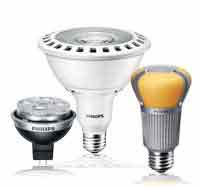
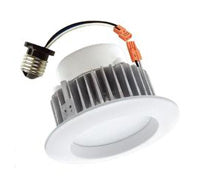

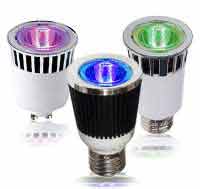


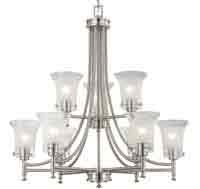
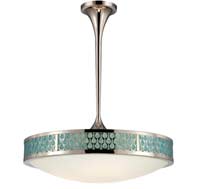




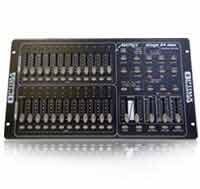
 The search for environmentally friendly lighting for retail, office, architectural floodlighting, and hotel applications has often proved frustrating for individuals seeking low wattage, high output, and high CRI light sources. Striking this combination of light characteristics has been seldom, that is until now.
The search for environmentally friendly lighting for retail, office, architectural floodlighting, and hotel applications has often proved frustrating for individuals seeking low wattage, high output, and high CRI light sources. Striking this combination of light characteristics has been seldom, that is until now.  A Purdue University land-use scientist found in 2007 that there are likely more parking spaces in the United States than cars. The scientist found that parking lots in Illinois, Indiana, Michigan, and Wisconsin amounted to about 490 square miles. Parking lots pose numerous environmental problems. One of the most important is how to light these often large lots efficiently for hours on end every day of the year. Fortunately, there seems to be an environmentally friendly solution:
A Purdue University land-use scientist found in 2007 that there are likely more parking spaces in the United States than cars. The scientist found that parking lots in Illinois, Indiana, Michigan, and Wisconsin amounted to about 490 square miles. Parking lots pose numerous environmental problems. One of the most important is how to light these often large lots efficiently for hours on end every day of the year. Fortunately, there seems to be an environmentally friendly solution:





Stay in Touch